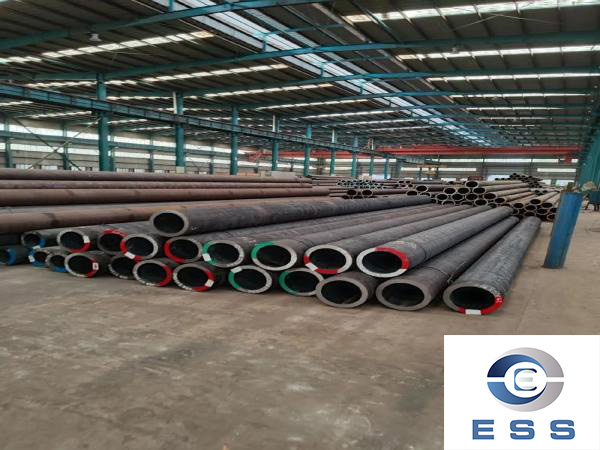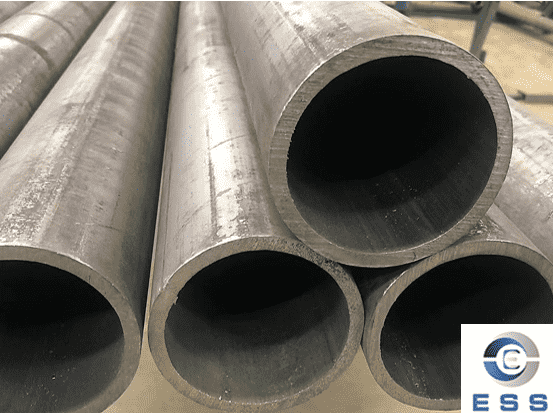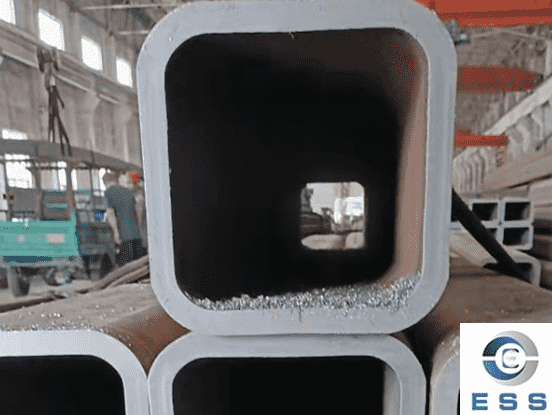Characteristics of ultrasonic testing for seamless pipe

Ultrasonic testing of seamless steel pipes is one of the important means to ensure the quality of steel pipes. By using ultrasonic testing technology, seamless steel pipes can be comprehensively and accurately tested for quality, thereby avoiding various safety accidents caused by steel pipe quality problems. This article will focus on the methods, principles, characteristics, applications and development prospects of ultrasonic testing of seamless steel pipes.
Methods of ultrasonic testing
Due to the characteristics of its shape and geometric dimensions, seamless steel pipes are generally tested by transverse wave reflection method. According to the coupling method between the probe and the surface of the pipe, it can be divided into two basic methods: contact method and water immersion method. The following are brief introductions:
1.Contact method
The contact method refers to the method of direct contact between the probe and the surface of the pipe for flaw detection. It is generally operated manually. This method has a slow flaw detection speed, but the equipment is simple, easy to operate, and convenient to debug when changing specifications. Therefore, it is still often used in the case of small batches and multiple specifications.
2. Water immersion method
The water immersion method refers to the method of flaw detection in which the probe does not contact the surface of the pipe and water is used as the medium between the two. Water immersion flaw detection has the following advantages: it can use focused sound beams, which can significantly improve the flaw detection sensitivity, resolution and ability to detect small-diameter pipes, and facilitate mechanization and automation; because it solves the problem of probe wear and uses cheap coupling media, it can reduce production costs. Therefore, the water immersion method has been widely used in the inspection of large quantities of pipes.
Ultrasonic testing principle
Ultrasonic testing is a non-destructive testing technology. Its principle is to use the propagation and reflection characteristics of ultrasonic waves in objects to detect the internal structure and defects of objects. When ultrasonic waves propagate inside an object, they encounter different medium interfaces and reflection and refraction phenomena occur. By receiving and processing these reflected ultrasonic signals, the internal structure and defects of the object can be determined.
For ultrasonic testing of seamless steel pipes, the pulse reflection method is usually used. This method emits ultrasonic pulses into the steel pipe and receives the reflected signals, and determines the defects inside the steel pipe according to the amplitude and time difference of the signals.
Ultrasonic testing characteristics
1. Non-destructive testing: Ultrasonic waves will not cause damage to the object being tested, and can be tested without destroying the steel pipe.
2. High detection accuracy: Ultrasonic waves can detect tiny defects and details, and can accurately locate the location and size of defects.
3. Wide range of applications: Ultrasonic testing is suitable for the detection of various materials, such as steel, non-ferrous metals, ceramics, etc.
4. Fast detection speed: Ultrasonic waves have a high detection speed and can quickly complete the detection of a large number of objects.
5. Easy operation: Ultrasonic testing equipment is easy to operate, and the test results are easy to analyze and interpret.
Application of ultrasonic testing in seamless steel pipes
1. Production process control: During the production process of steel pipes, ultrasonic quality testing of steel pipes can be used to detect and deal with defects in a timely manner and improve product quality.
2. Product inspection: For steel pipes that have been produced, comprehensive testing is carried out through ultrasonic waves to ensure that product quality meets the requirements.
3. Online monitoring: In some production scenarios, steel pipes can be monitored in real time through online ultrasonic testing systems to ensure safety and stable quality during the production process.
4. Repair and maintenance: For pipeline systems that have been installed and used, regular testing can be carried out through ultrasonic waves to detect and prevent potential safety hazards.
5. Scientific research: Ultrasonic testing technology can be used to conduct in-depth research on the microstructure and properties of steel pipe materials, and promote technological progress in related fields.
Read more: Difference between seamless pipe and seam pipe













 Eastern Steel Manufacturing Co.,Ltd not only improve product production and sales services, but also provide additional value-added services. As long as you need, we can complete your specific needs together.
Eastern Steel Manufacturing Co.,Ltd not only improve product production and sales services, but also provide additional value-added services. As long as you need, we can complete your specific needs together.










